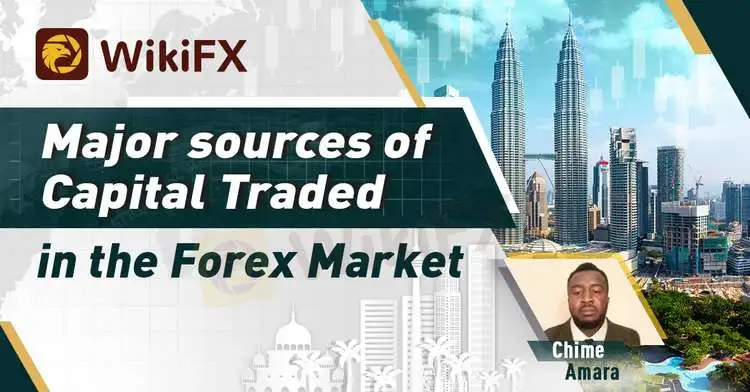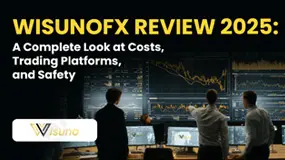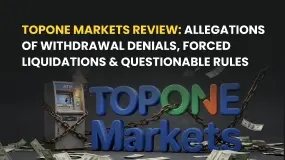Major sources of Capital Traded in the Forex Market
Abstract:Very often many traders get curious when they hear that the forex market has the largest amount of capital investment in the world with over 6.2 Trillion dollars invested and roughly 1.5 Trillion dollars traded daily. Some pause to argue where these large capitals come from. To this end, we have discussed extensively in the article, the major sources of the Capital traded in the forex market today.

By: Chime Amara

Major sources of Capital traded in the forex market.
There are mainly six major contributors of the capital traded in the forex market today. These players encompass both the big banks, institutions, government, hedge fund and retail traders. Below is the list of these players in the forex market today:
· Central Banks: The Central Banks are the liquidity providers in the forex market. They set the rate at which various currencies could be exchanged. The reason why they are called liquidity providers owes to the fact that they supply the commercial banks with the foreign currencies to be exchanged at the counter (OTC).
· Commercial Banks: Commercial banks are no doubt the biggest players in the forex market today. They contribute over 70% of the capital traded in the forex market. Their positions move the market more than any other. Hence, most retail traders tend to study the direction taken by these banks to guide them in making their own decisions. The major commercial banks are in the industry are: Citi Bank 6.9%, JP Morgan 7.9%, UBS 6.2%, Barclays Bank 5.7%, Deutsche Bank 7.2%, BAML 4.2%, Goldman Sachs 8.3%, HSBC 7.3%, Morgan Stanley 8.2%, XTX Markets 5.1%, etc.
· Government: Government bodies are the third significant players in the forex market today. They contribute over 8% of the capital traded in the forex market. They are often long-term investors. Often they preserved the country's savings in different currencies to hedge against inflations.
· Hedge Fund: This is made up of a large sum of money contributed by individuals and given to an expert to trade on their behalf and deliver profits to the owners. The total amount contributed by these wealthy individuals is often so large; measuring over 5% of the capital traded in the forex market today.
· Institutions: Many big firms are known to participate in the forex market. Through forex trading, various institutions can beat inflations and sustain their business. Also, multi-national corporations can maintain their branches in different countries through forex trading. Over 3% of the capital traded in the forex market today comes from these institutions.
· Retail/Individual Traders: Individual traders constitute the largest population of participants in the forex market today. They provide the least capital in the market despite having the largest number. Often only 1% of the capital traded in the forex market today comes from the individual. The reason is understandable as virtually every trader leaves 90% of their capital with the commercial banks while investing with the rest. The bank in return now has large capital at its disposal to participate in the forex market.

Related broker






Read more

4XC Exposed:Do Traders Report Sudden Balance Disappearance, Outdated Process & Poor Customer Service
Have you experienced a NIL balance in your 4XC trading account due to a sudden liquidation of your forex positions? Gained a healthy return on your deposit but saw a quick disappearance of funds in your account afterward? Do you still need to go through the old and outdated process of opening a 4XC Broker trading account? Are you struggling to withdraw your funds? These have allegedly become rampant for traders tied to this broker. In this 4XC review article, we have shed light on the negative comments. Take a look!

WisunoFX Review 2025: A Complete Look at Costs, Trading Platforms, and Safety
WisunoFX is a trading company that lets you trade different types of investments. It has been running for 5 to 10 years and is registered in Seychelles. The broker lets you trade currencies (Forex), stock indexes, commodities like gold and oil, individual stocks, and cryptocurrencies. It offers itself as a good choice for traders around the world by providing the popular MetaTrader 4 (MT4) and MetaTrader 5 (MT5) trading platforms. This review gives you an honest look at what WisunoFX offers. We will examine how it is regulated by two different authorities, compare the different account types you can choose from, and look at trading costs, including spreads and its very high leverage options. We will also check how well its platforms work and what real users say about it. This will help you decide if this broker is right for your trading goals.

Classic Global Ltd Review: Can You Trust This Broker or Are There Warning Signs?
When choosing an online broker, the most important thing for any investor is safety. The internet presents numerous opportunities, but it also poses significant risks. This brings us to Classic Global Ltd, a forex and CFD broker that has gotten attention recently. Potential investors are asking a crucial question: Is Classic Global Ltd. trustworthy? To answer this, you can't just rely on what the broker says about itself. You need to carefully look at whether it's properly regulated, its company history, and what real users say about it. This article gives you a complete, fact-based analysis designed to cut through the confusion. Our goal isn't to make a quick judgment but to show you the proven facts, so you can make a smart decision about the safety of your money. Doing your homework is the foundation of successful investing, and this review is an important part of that process for anyone thinking about Classic Global Ltd.

TOPONE Markets Review: Allegations of Withdrawal Denials, Forced Liquidations & Questionable Rules
Do you think that TOPONE Markets’ forex trading rules need to change? Do these rules prevent you from earning profits? Does the forex broker adopt a dubious approach by ensuring fast deposits but delayed withdrawals? Have you witnessed forced liquidations of forex positions by the Cayman Islands-based broker? In this TOPONE Markets review guide, we have shared several complaints against the broker. Read on!
WikiFX Broker
Latest News
BLITZ finance Review 2025: Is It a Scam? License and Safety Evaluation
Inside Darwinex Broker Review: Regulation Explained & Authentic User Complaints
B2CORE Update Enhances Forex Broker Operations and CRM Systems
MIFX Regulation, Is This Indonesian Broker Safe?
The "Invalid Profit" Trap & The Withdrawal Maze: A Deep Dive into MultiBank Group
Is Deriv Safe? A Deep Dive into Regulatory Claims vs. Withdrawal Nightmares
WisunoFX Review 2025: A Complete Look at Costs, Trading Platforms, and Safety
9X Markets Review: Is It Reliable?
IQ Option Review: Real User Experiences
Bessent to propose major overhaul of regulatory body created from financial crisis
Rate Calc

